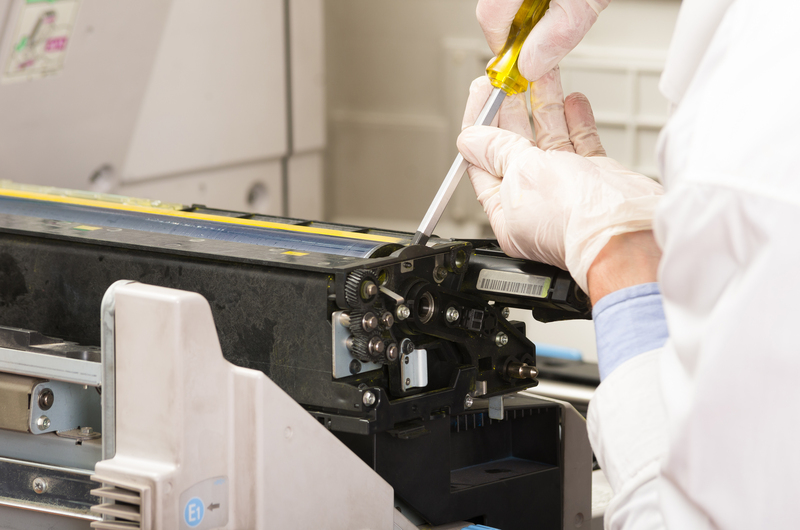How to Responsibly Get Rid of Used Pots and Pans
Is your kitchen cluttered with old, scratched, or unwanted cookware? Many households face the same dilemma: how to responsibly get rid of used pots and pans without sending them straight to a landfill. The answer isn’t as straightforward as tossing them into your standard recycling bin. In this comprehensive guide, you'll discover the best ways to sustainably dispose of, recycle, donate, or repurpose your cookware while keeping environmental impact to a minimum.

Why It Matters: The Environmental Impact of Old Kitchenware
Disposing of old cookware carelessly can contribute significantly to landfill waste. Most pots and pans are made from materials that take centuries to break down, and improper disposal may lead to pollution and resource wastage. Learning eco-friendly ways to get rid of used cookware is not just better for the planet, but also helps support local communities and can even improve your own living space.
Understanding What Your Pots and Pans Are Made Of
Before you figure out how to properly get rid of pots and pans, take a closer look at what they're made from. Common materials include:
- Aluminum: Lightweight and commonly found in nonstick pans.
- Stainless Steel: Durable and rust-resistant.
- Copper: Excellent heat distribution but often coated in tin or steel.
- Cast Iron: Sturdy, heavy, and often seasonable.
- Nonstick (Teflon or ceramic coating)
- Mixed materials (handles, rivets, etc.)
Understanding the composition is important because it affects your options for responsibly disposing of unwanted pots and pans.
1. Best Recycling Options for Used Pots and Pans
Can You Recycle Old Pots and Pans?
Many metal pots and pans can be recycled, but they usually aren't accepted in curbside bins because of their size, coatings, and mixed materials. Here's how to do it correctly:
- Check with Your Local Scrap Yard: Most scrap metal facilities welcome cookware made from aluminum, copper, and steel--with and without coatings.
- Contact Your Municipal Recycling Program: Some areas organize special household metal recycling events or drop-offs for large items that don't fit in regular bins.
- Remove Non-Metal Parts Where Possible: Detach plastic handles or glass lids when you can, as these may need to be processed separately.
Note: Cookware with nonstick coatings (like Teflon) is less recyclable, but facilities may still accept them if coatings are not excessive. Always call ahead.
How to Prepare Pots and Pans for Recycling
- Wash and dry thoroughly to remove food debris.
- Separate lids, handles, and any mixed materials if you can.
- Check for hazardous coatings: Some old nonstick pans may contain PTFE or PFOA. Flag these when dropping them off.
Following these steps increases the chance that your old cookware will actually be recycled instead of landfilled.
2. Donate Gently Used Cookware to Give Them a Second Life
Who Can Use Your Old Pots and Pans?
If your cookware is free from rust, excessive warping, or toxic coatings, someone else can benefit. Consider:
- Local charitable organizations such as shelters, food banks, or re-home programs.
- Thrift stores like Goodwill or Salvation Army.
- Community kitchens or soup kitchens that welcome quality kitchenware.
- Immigrant or refugee resettlement programs needing basic home supplies.
Tips for Donating:
- Clean the pots and pans thoroughly.
- Check with the organization about their donation policy--some do not accept nonstick due to potential health hazards.
- Gather sets if possible, as complete sets are more desirable.
Your gently used cookware could become a valuable resource for someone starting over or struggling financially.
3. Creative Ways to Reuse or Upcycle Old Pots and Pans
Repurposing Cookware in Your Home or Garden
If recycling or donating isn't an option, why not upcycle old cookware? Here are some fun and eco-friendly ideas:
- Planters and Herb Gardens: Drill holes in the bottom of old stainless, copper, or cast iron pans and transform them into unique plant pots.
- Bird Baths or Feeders: Shallow pans, especially copper ones, make stylish outdoor bird baths or feeders.
- Wall Art or Kitchen Decor: Use lids as clocks or hang colorful pans as rustic kitchen art.
- Storage Bins: Stack old pots and pans to organize tools or craft supplies.
- Pet Bowls: Large, shallow pans work well as sturdy feeding bowls.
- Bake Sale Trays: Nonstick or stainless pans can become serving trays for local events.
Not only does this approach help the environment, but it also sparks creativity and gives your home a unique charm!
4. Disposal: When Throwing Away Is the Only Option
How to Safely Dispose of Unusable Cookware
If your pans are irreparably damaged, heavily corroded, or coated in substances hazardous to health, sometimes the only choice is safe disposal. Here's how to handle it:
- Nonstick Coated Pans with Damaged Coating: These may release toxic fumes. Wrap them in newspaper or a sealed bag before disposal to prevent flakes from spreading.
- Check Local Waste Guidelines: Some municipalities request that metal items be sent to specific landfills or recycling centers even if they can't be traditionally recycled.
- Label Clearly: Mark boxes or bags that contain hazardous or sharp materials to protect sanitation workers.
While trashing kitchenware is a last resort, following these steps helps protect workers and the environment.
5. Specialized Cookware Take-Back and Manufacturer Programs
Brand and Store Recycling Initiatives
Many major cookware brands now offer take-back programs for their used products, ensuring responsible recycling and disposal:
- Calphalon: Offers a mail-in recycling program for old nonstick pans.
- Le Creuset: Some stores accept old cookware for recycling or disposal when you buy a replacement.
- Bed Bath & Beyond (and similar retailers): Have offered trade-in days; ask about current programs.
Contact the manufacturer of your cookware or your local retailer to check for existing responsible cookware disposal programs.
6. Tips for Preventing Waste in the Future
Choose Sustainable Cookware That Lasts
The best way to avoid having to figure out how to get rid of old pots and pans is by investing in quality from the start:
- Buy from reputable brands known for durability and lifetime warranties.
- Choose materials like stainless steel and cast iron, which can often be re-seasoned or restored.
- Avoid low-quality nonstick pans that wear out quickly and may pose health risks.
Proper care, such as handwashing, using non-metal utensils, and storing cookware properly, can extend the life of your pots and pans significantly.

Frequently Asked Questions: How to Responsibly Get Rid of Used Pots and Pans
Can I put old pots and pans in the curbside recycling bin?
Usually not. Most standard recycling programs do not accept bulky metal cookware due to sorting issues and potential contaminants. Use specialized scrap metal or municipal recycling drop-offs instead.
Are nonstick pans recyclable?
It depends on your local recycler. Some facilities accept them after you remove plastic handles, while others reject them due to coatings. Always check in advance.
How can I donate cookware that's missing a lid or has minor scratches?
Many charities and shelters accept single pans or slightly imperfect items, especially if they're clean and functional. Ask before you drop off and consider grouping items into sets if possible for greater usability.
Is it safe to compost cookware?
No. Cookware is made from metals and sometimes plastics or chemical coatings that are not biodegradable. Never put old pots and pans in your compost bin.
Can I sell my old pots and pans?
Yes! If your cookware is in good condition, consider selling through online marketplaces, garage sales, or community exchange groups. Vintage brands and certain materials, like copper or cast iron, are especially sought after.
Conclusion: Make Responsible Choices with Your Old Cookware
Learning how to responsibly get rid of used pots and pans is a small but impactful step toward sustainable living. By recycling, donating, upcycling, or using manufacturer take-back programs, you can minimize environmental harm and even help others in your community. Always think before you toss, and pass along these tips the next time a friend asks, "What do I do with my old frying pan?"
Your actions in properly disposing of kitchenware not only keep waste out of landfills, but also set an example for responsible consumerism in your home and beyond. Let's work together to create a cleaner, greener future--one pot at a time!
```